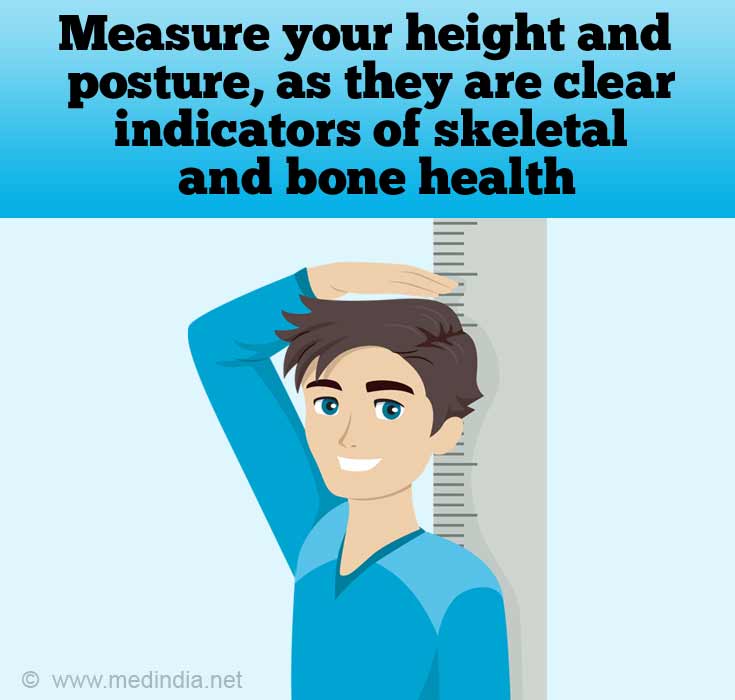- 6 Personality Quirks You Didn't Know Were Medical Conditions - (http://www.cracked.com/article_19228_6-personality-quirks-you-didnt-know-were-medical-conditions.html)
- 10 Bizarre Medical Conditions - (https://health.howstuffworks.com/diseases-conditions/rare/10-bizarre-medical-conditions.htm)
- What Is Your Body Trying to Tell You? - (http://www.oprah.com/health/Catch-Health-Problems-Early-Self-Diagnosis)
- Self-Diagnosis 101 - (http://www.oprah.com/health/self-diagnosis-101)
Self-Diagnosis
Self-diagnosis, a process of diagnosing or identifying medical conditions in oneself is assisted by either medical dictionaries or books or past personal experiences or resources on the Internet or by recognizing symptoms and signs of a condition that a family member previously had.
Modernization has had a profound impact on public health, mostly negative. Addition of chemical fertilizers to crops and artificial additives to processed foods has resulted in a whopping increase in the occurrence of disorders such as Alzheimer’s, nervous and cardiovascular disorders, digestive ailments and many psychological problems, making it a matter of concern. Watch out for these potentially deadly health hazards with these 10 simple steps.

1. Monitor your sleep: Hectic schedules tend to deprive you of regular and adequate sleep.
If you are feeling stressed out doing your day-to-day activities, or if you are unable to concentrate on work and make the right decisions, or if you can’t seem to make it through the day without getting your afternoon nap, it suggests that your body isn’t getting enough sleep. If you are waking up every morning feeling weak and low in energy, even after getting enough sleep, it’s time to visit your doctor.
2. Have a cardiovascular check: People above 40 years of age and patients undergoing treatment for heart conditions and blood pressure should make it a point to get a complete cardiovascular screening done. It helps diagnose a heart attack and stroke risks at an early stage. Keep in mind to monitor your blood cholesterol levels regularly at least once in every 5 years.
3. Get naked: Once in every 5-6 months, do a full body self-examination to detect the presence of any lumps, tumors or unexplainable abnormalities. Look out for suspicious moles greater than 6mm in diameter, pink or brown colored with jagged edges and asymmetrical ones. Consult your dermatologist immediately if you find any irregularities.
4. Have a PERFect day: Ideally, managing and monitoring just these 4 things on a daily basis will ensure that you’re healthy and fit. Produce (your daily intake of fresh fruits and vegetables), Exercise (how much you worked out), Relaxation(whether you took time for yourself and had fun did something creative) and Fiber (whether you had enough fiber in your diet).
5. Check your blood pressure: Keeping a digital monitor at home is a good option. It helps monitor your blood pressure effectively. Make it a point to visit a clinic to get your blood pressure tested every couple of months if you don’t have a digital monitor. Watch out if the top value exceeds 120 and the lower value exceeds 80.
6. Measure your height: Height and posture are clear indicators of skeletal and bone health. If you’re in your 50’s, make it a point to keep measuring your height every month, and note changes, if any. A decrease in stature may suggest a change in bone mineral density, which if ignored, leads to osteoporosis. Get your bone mineral density test done, especially if you’re a woman, and going through menopause.

7. Check your hairbrush: Hair fall problems are not just confined to teenage girls. Hair fall in the early 40’s may be due to thyroid problems or low iron content. Check your blood ferritin levels and visit the doctor for a thyroid check.
8. Count your heartbeats: Heart rate recovery (HRR) is an important factor, considering the elevating risks of heart attack in women. A study conducted suggests that women having poor HRR heart rate recovery are twice as more likely to fall prey to heart attacks than those who have a normal HRR. Make it a point to calculate your HRR after exercising. Here’s how to do it.
The next time you exercise, immediately afterwards, count your heart beats for 15 seconds. Multiply the result by 4 to get your heart rate. Now sit down, wait for 2 minutes and calculate your heartbeats once again. Subtract the second number from the first. If the result falls below 55, your HRR is higher than normal.
9. The ‘U’ factor: The color of your urine is an important factor in determining your fluid intake. Dark colored urine with a strong smell is a clear indication of dehydration and low fluid uptake. Ideally, urine should be straw colored, clear and odorless. If you’re having enough liquids, but your urine still smells weird, consider visiting a doctor.
10. Time for a feet check: Checking your feet regularly is important, since they tend to be the most neglected parts of the body. Diabetic patients need to be extra careful and look out for sores, blisters, fungus, peeling skin, cuts, bruises and other foot problems, being more at the risk of sepsis and infections post bruising.
Researchers suggest that the best possible way to rule out any health hazard is to check your family history. Diseases that run through your family are actually weak spots in your health armor, which if you are aware of from the beginning, will actually help you prepare and avoid factors that could trigger your genetically present dormant condition.
Following a healthy lifestyle and making sure you stay away from addictions of any kind will surely postpone the onset of your family disorder. Doctors recommend following these four important steps to keep genetically present diseases at bay.
- Eat healthy
- Exercise regularly
- Quit smoking and other addictions
- Get regular check-ups and screenings done
When to visit the doctor; and when not to
A stuffed or runny nose and a mild fever suggest a simple infection, probably viral. Symptoms of a viral infection usually disappear within 2 weeks. It’s time to visit a doctor if it extends.
Feeling band-like pains on the front or back of your head and/or neck accompanied by stress and sleep problems could be just a tension headache. If it doesn’t leave you after your worry is gone, consider paying the doctor a visit.
Risky conditions-visit your doc immediately

- Sudden, unexplained nausea and vomiting, shortly after taking prescribed or unprescribed OTC drugs is dangerous. It may be a sign of drug allergy.
- Throbbing eye pain and/or blurred vision is indicative of glaucoma or increased blood pressure. Ignoring these symptoms tend to cause life-long health problems and may even result in loss of vision.
- Frequent headaches, especially in those over 50, may be a sign of aneurysm, migraine, brain tumors or encephalitis. Visit your doctor if the symptoms persist.
- Sudden, severe and crippling abdominal pains may be due to appendicitis or intestinal obstruction or even acute pancreatitis. These conditions require immediate treatment and hence, ignoring them could be fatal.
- Frequent heartburn irrespective of your type of food may be GERD (gastro-esophageal reflux disease).
- Sudden sweating, dizziness, accompanied by severe crushing, squeezing pain in the chest is probably a heart attack. Send for an ambulance, and meanwhile swallow an aspirin.
- A severe headache, followed by vomiting, nausea and confusion may be due to concussion or bleeding in the brain.
- Meningitis or brain hemorrhage usually show symptoms like severe headache, confusion, double vision, stiff neck, nausea and vomiting. So stay alert.






